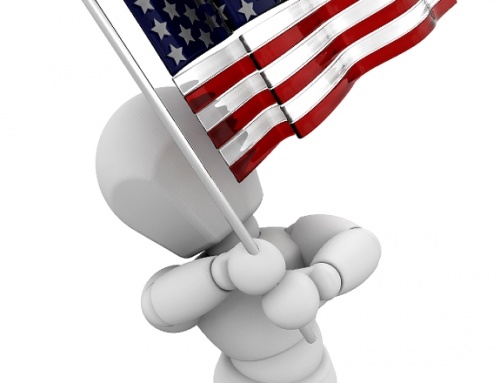Being too humble with client praise can have unintended consequences.
Veterinary healthcare delivery is a calling for most of us. We entered the profession for very humanitarian reasons, wanting to help animals, and in turn their stewards, and make a difference in the human-animal bond of the family. We do what we do and are enthusiastic about our training and abilities because of our patients. We should never forget the client-patient bond are at the center of care and that serving them is a privilege.
In the USA, there are about 30,000 practices, staffed with caring people who have the same calling, or entered for the paycheck and have been learning about the strength of the Human-Animal Bond (HAB). Like many of you, we share heartwarming patient/client stories with others to remind us of why we are in the veterinary healthcare delivery profession.
At times, however, our “jobs” – whether as an administrative support or clinical support member – can become routine, as each day blends into the next. This is especially true when it is a doctor-centered practice, and staff have minimal contribution responsibilities. There is nothing “wrong” with doctor-centered paradigms, that is how most of us were trained. However, in recent years, wellcare has gained significant traction in our healthcare delivery programs, and the veterinarian does not have the time to do nutritional counseling on a 3-4 week cycle, behavior management for puppies/kittens, nor should they be spending time on DG1+ and DG2+ hygiene programs, best handle by staff (just like human dentists and their hygienists), doing basic imaging (again, in human healthcare, the technician does the imaging, and the radiologist does the interpretation/diagnosis. Our academic professionals seldom trains new graduates to utilize veterinary extenders; which is compounded by the first employers who are baby boomers or Gen-X veterinarians who did not learn about wellcare as a critical part of practice. The current estimate is about 70% of client access is driven by client wellcare concerns; about 85% of clients consider their four footed, furry, critters are family members, and 30% of those are given child status in the family setting.
Whether a patient visit is driven by a minor condition, vaccinations, or wellcare concern, or the animal is presented for surgery or more intensive inpatient care, each interaction with every member of the practice staff is NOT an ordinary encounter for the client or patient. We are reminded of this every time clients than us for the care and attention we have provided. And what is our usual response? Most of us, by our humble nature and how we were raised, shy away from compliments. When a client has a positive experience and conveys gratitude, our natural human instinct is to deflect the gratitude because it makes us feel a little uncomfortable (we just did what we were trained to do – no big deal). So the normal response is to say, “Oh it was nothing,” or “It’s part of my job; I do this every day,” or perhaps we offer a simple ”You’re welcome” and move on. But these are suboptimal responses. What we have unintentionally done is to minimize that experience in the client’s mindset, and even the patient’s enhanced quality or duration of life.
Though the client may view your response as normal, there is a missed opportunity to deepen the connection with the client, and strengthen the meaning of your efforts for their family pet. I really experienced this while earning my MHA, while doing an externship at Columbia-Presbyterian in the Department of Thanatology. They assigned me to outpatient services, which offered end-of-life counselling. I met a woman who stopped me in the hallway and said, “Doctor, I owe so much to you and this clinic because this is Bullet 21, and for the first time, it means so much more than just burying my companion out on Long Island with the first 20 Bullets. I have gone through counselling, and I am doing better now. I just wanted to say thank you.” I did not admit it to her, but at the time, I had no idea who she was. I do not know exactly what I said to her except that I know her response was to share with me the stories of the first 20 Bullets and now Bullet 21. All 21 were German Shepherds, she always named them Bullet and on the weekend, she would commute to Long Island to visit the graves of the first 20 and pay her respect to their memories.
A richer response to this kind of client interaction may have been, “I am glad we have been able to help. Your commitment to the memory of your past companion reinforces why I went into veterinary medicine; I wanted to help the critters and their stewards, and promote understanding of the human-animal bond. It really means a lot that we have been able to help you.” If the conversation ends there, that was already a much deeper experience for both parties. It reminds us as healthcare providers what a privilege it is to be allowed into someone’s life. In acknowledging a client’s compliment with an enriched response, you also reaffirm to the client how important they are in the on-going human animal bond. This “awareness” on my part was recognized by the Latham Foundation when they asked me to write a chapter for Universal Kinship, the Bond Between All Living Things – the chapter was titled Death with Dignity, and explored the animal’s role in hospice.
Every leader within a veterinary healthcare delivery system, no matter how far removed from clients or patients, needs to think about how he or she interacts with the client/patient pair. Contact with clients can occurred anywhere, such as when someone is cleaning the parking lot or just passing a client in the hallway. A study published in Veterinary Economics, a decade and a half ago, reported even animal caretakers had a 79% contact rate with clients, even if it was just bring the patient forward. You may be asked to provide directions, or you may come across someone who looks stressed; you can always ask whether there is anything you could do to make his or her day better.
Even if you are the practice bookkeeper, putting clients and patients at the center of your thought process applies to you. You are unlikely to have a “traditional” client interaction, if you think about it, you might have opened a discussion with someone who is struggling to afford the patient’s healthcare, maybe you helped the client consider financial assistance (e.g., Care Credit) or gone to bat for the client as they battled their insurance carrier. Your intentions with clients are important to them. Many practices have neglected advising clients about third party payment systems (physicians, dentists, hospitals, and most other healthcare professions have not). When someone shares with a client that the insurance “wellcare rider” pays $2 for $1 of premium, eyes light up, and when told some pet insurance companies, like PetsBest, processes claims in less than 2 weeks, the client stares in misbelief (this gets them reimbursement before the first Care Credit payment is due). When given thanks to this type situation, your response could be, “I am glad we were able to help you. That’s why we are here. It means a lot to me that you said that.”
I encourage practice leaders, managers, and staff to seek out those opportunities to interact with clients. This is super critical with Quality of Life (QOL) follow-up, as discussed at www.pawspice.com. While some veterinarians think that they do this very well, yet recent reports show there is a major void in primary provider sensitivity. AAHA has recently expanded the available literature about End of Life situations. Every member of a practice team has an operational responsibility on how to effectively stay in touch with clients about patient welfare issues.
Each of us should be humble, but not to the degree that our humility gets in the way of having a deeper experience with our clients about their pet’s welfare. We need to recognize that what we do means a great deal to the stewards of the patients we treat. It’s okay to bask in the moment because it reaffirms why we entered into the veterinary healthcare field – and doing so ultimately will keep clients bonded to the practice, accessing care for their furry family member sooner, and understanding that patient welfare is at the center, or the heart, of your practice’s healthcare commitment.
At times our own light goes out and is rekindled by a spark from another person. Each of us has cause to think with deep gratitude of those who have lighted the flame within us.






